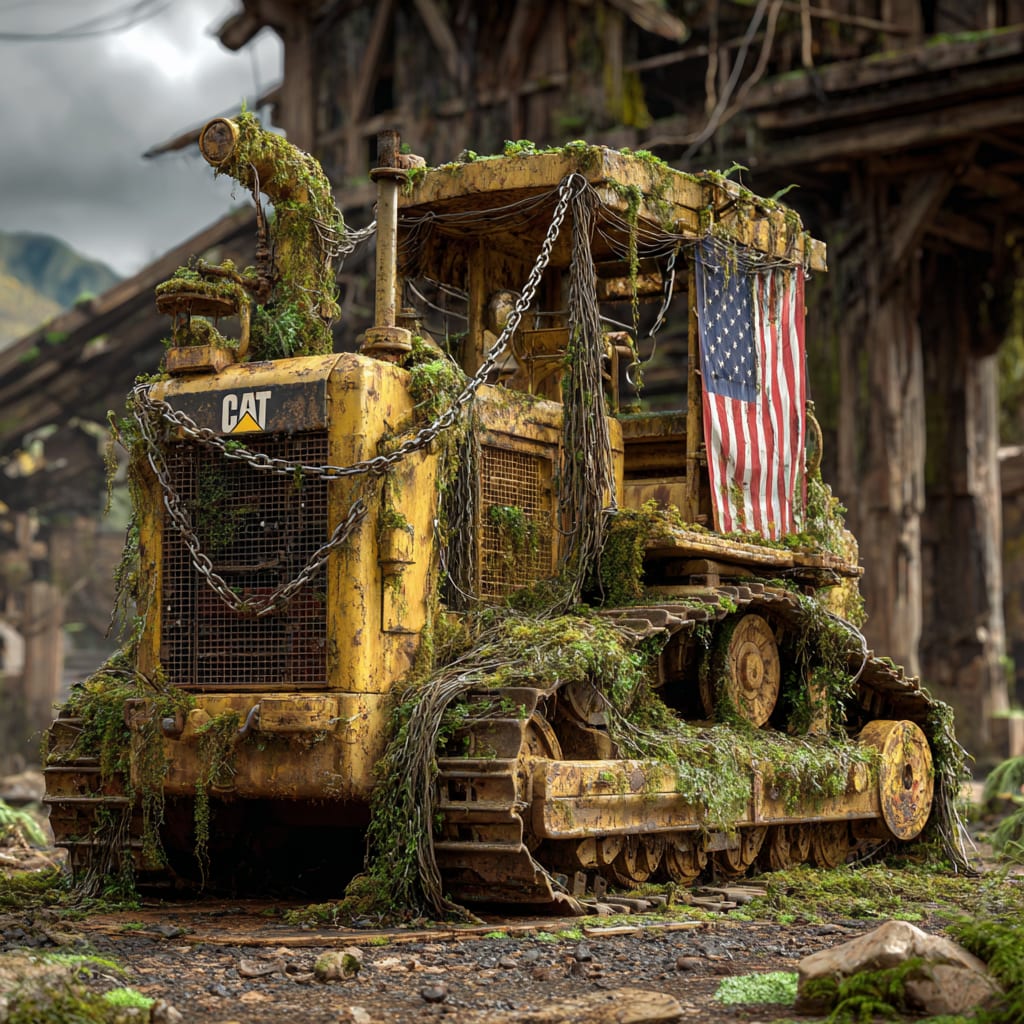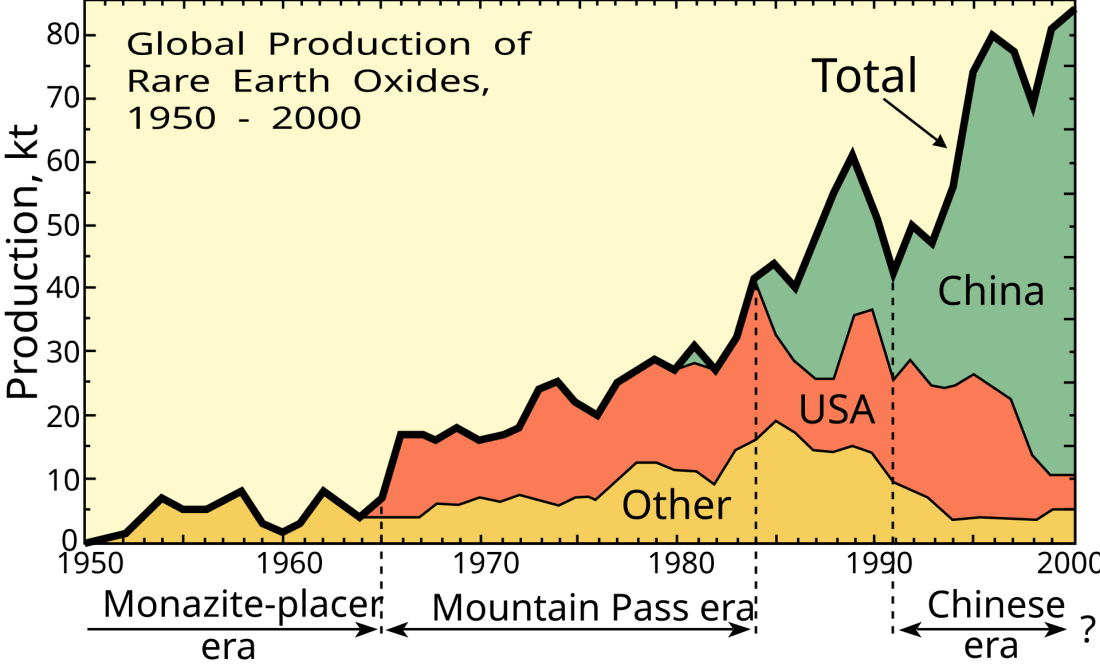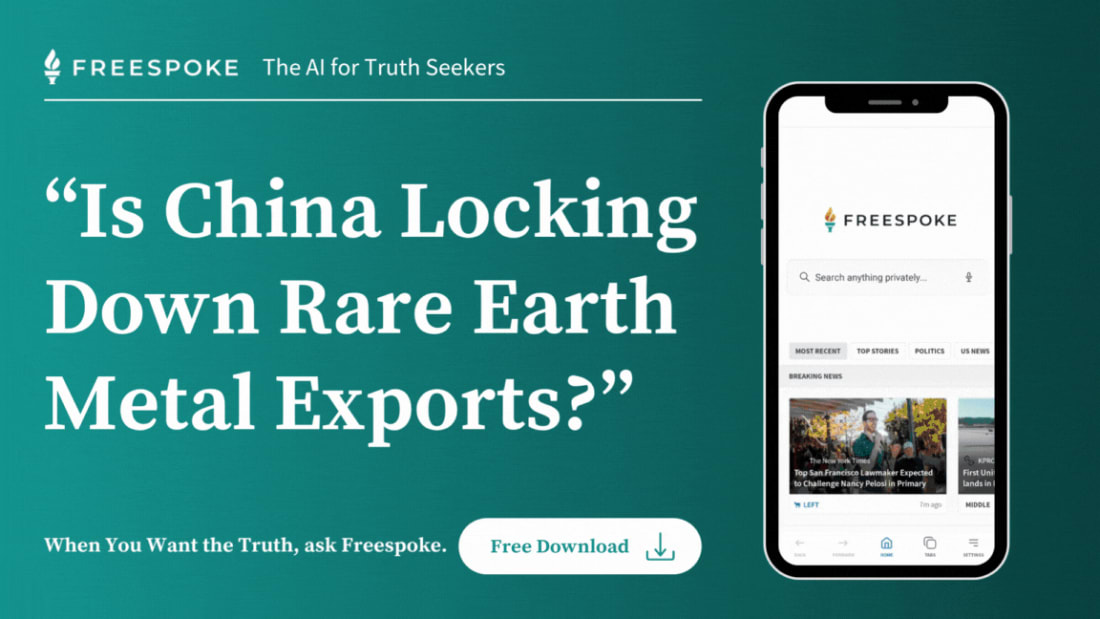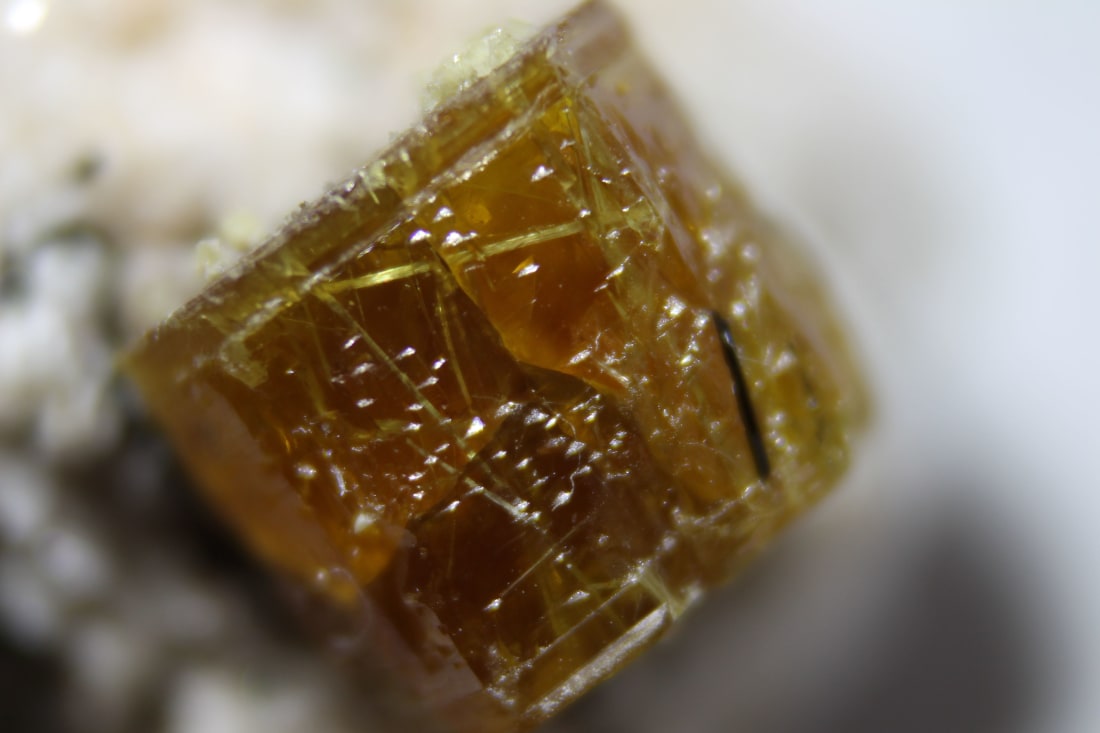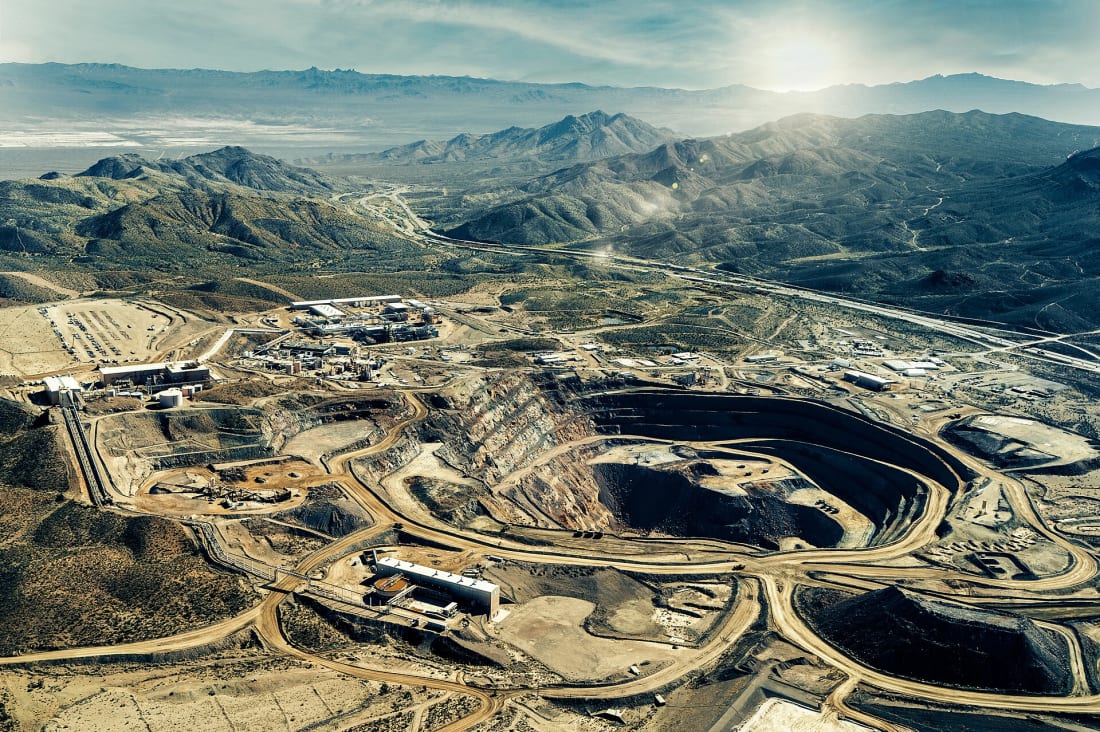|
 |
The Green Left Crippled America While Empowering China For 25 Years
The Hidden Cost of Al Gore's Green Virtue Is The Real Inconvenient Truth
The Capitalist is a reader-supported publication
Reject Corporate Left Wing Journalism
“It’s scandalous that we don’t have a rare earth strategic reserve... We let China monopolize 90 percent of refining rare earth materials.
Where were we, realizing the importance of these?”
- Jeremy Siegel, Professor Emeritus of Finance, University of Pennsylvania - CNBC
The answer it turns out is remarkably simple.
We listened to Al Gore and we realize now, that was a mistake.
In the shadow of California’s Mojave Desert, the Mountain Pass Mine once hummed as the beating heart of America’s rare-earth empire. Discovered in 1949 amid uranium hunts gone awry, its veins of bastnäsite ore yielded the esoteric metals that would power the postwar technological boom—from color televisions to missile guidance systems.
By the 1980s, this open-pit scar in the earth supplied nearly 70 percent of the world’s rare earths. Then, in 2002, after a toxic spill of radioactive wastewater tainted nearby streams, the mine shuttered.
Environmental regulators descended, Chinese competitors, more than happy to carry the burden, flooded the market with cheap alternatives, and what followed was a quarter-century of American complacency and environmental virtue signaling.
Today, as electric vehicles and AI super computers chips demand ever more of these minerals, the irony stings: The green revolution Al Gore helped ignite has left the U.S. perilously dependent on the very nation it seeks to stay ahead of.
Is Your News Lying to You?
Discover the Truth with Freespoke
In today’s media world, misinformation spreads faster than markets can react. One minute you’re reading about 401(k) changes, the next you’re wondering if China’s rare earth metals exports are really the key to America’s future, or just another hype cycle.
That’s where Freespoke comes in.
Freespoke helps you separate truth from misinformation. With one tap, you’ll see the full picture with what experts agree on, where they differ, and what’s being overlooked. It even surfaces answers from publishers you trust, like The Capitalist, so you can know what’s reliable.
It’s anonymous, clean, and uncensored. No tracking. No data harvesting. Just truthful information.
Whether you’re fact-checking a viral investing claim, researching energy trends, or trying to understand what’s really happening with your retirement, Freespoke helps you ask smarter questions and get full truth answers.
As an exclusive for The Capitalist readers: Get 35% off Freespoke Premium with code cap35.
Premium gives you ad-free browsing (no more creepy Big Tech trackers), unlimited AI summaries that break down complex financial question in seconds, and searchable podcast transcripts that pull truth straight from the experts.
If you want the truth, download the free app today and see what’s really going on.
Rare earths—a misnomer for 17 chemically similar elements like neodymium, dysprosium, and yttrium—are not geological rarities; in fact they’re more abundant than copper. Yet their extraction and refinement are fiendishly complex, laced with toxic acids and radioactive byproducts. These metals are the invisible sinews of modern life: neodymium magnets propel EV motors and wind turbine blades; europium lights up smartphone screens; terbium sharpens fighter-jet lasers. Without them, the net-zero dream—Gore’s clarion call since his 2006 film An Inconvenient Truth—crumbles. According to the International Energy Agency, rare earths will see demand surge 40-fold by 2040 to fuel clean energy transitions.
But the American environmental Left’s zealous pursuit of “Green Virtue” above all else, outsourced this vital national life blood (and others - Oil drilling, refining, robotics, chip production) to Beijing (among others - Middle East, Africa, Asia.) Where lax global standards have turned an American economic monopoly into dangerous anti-American geopolitical leverage. The bill for that complacency is now due, and it is going to have to be paid, and its going to be expensive.
The seeds of this vulnerability were sown in the late 1990s, as Al Gore, then Vice-President, championed the Kyoto Protocol and a global shift away from fossil fuels. His vision, amplified by his book “Earth in the Balance” (1992), framed environmentalism as a moral imperative, prioritizing emission cuts and environmental action over resource security. Idealism clashed with reality, and reality lost.
The Capitalist is a reader-supported publication
Reject Corporate Left Wing Journalism
Rare-earth mining, like fossil fuel extraction, invited scrutiny from the environmental left—groups like the Sierra Club, which Gore’s rhetoric emboldened. The result? A cascade of stalled projects that handed China 90 percent of global rare earth refining capacity.
Consider Mountain Pass itself. Intended to produce cerium, lanthanum, and neodymium oxides for magnets and catalysts, the mine—operated first by Unocal, then Molycorp—closed in 2002 amid environmental fines and spills that leaked heavy metals into the desert aquifer.
Revived in 2010 with $500 million in investments, Molycorp’s expansion faltered against Chinese price dumping. By 2015, the firm filed for bankruptcy, saddled with $1.7 billion in debt and unable to compete in a market flooded by Beijing’s cheap (state-subsidized) output. The human toll was immediate: hundreds of jobs lost in a rural economy already battered by deindustrialization.
Farther north, in Alaska’s Bristol Bay watershed, the Pebble Mine promised a different bounty—not rare earths per se, but copper, gold, and molybdenum laced with rhenium, a rare-earth analog critical for superalloys in jet engines. Envisioned as one of the world’s largest undeveloped deposits, Pebble could have yielded 6.5 billion pounds of copper over decades, bolstering U.S. supplies for EV batteries and defense tech. Yet the EPA vetoed its permit under Clean Water Act Section 404(c), citing risks to the world’s largest sockeye salmon fishery.
Environmentalists hailed the decision, but it epitomized the “out of sight, out of mind” ethos: Block domestic extraction, ignore the future fallout. This pattern of obstruction echoes a broader shortsightedness by the environmental left. Decades of opposition to nuclear power—fueled by concerns over incidents like Three Mile Island (1979) and Chernobyl (1986)—halted reactor construction, leaving the U.S. with aging plants, stagnant capacity and a fantastical promise that wind and solar would cover all future needs. Then AI was invented.
Goldman Sachs warns that AI alone could add 160 percent to power needs by 2030, straining grids built for a pre-AI past. As AI data centers devour electricity—projected to drive 20 percent of U.S. demand growth by 2030—the nation faces blackouts, soaring bills, a lot of dead birds, and a timeframe to correct this egregious error that is in all likelihood measured in decades.
The rare earth peril America faces demands a strategic reserve, akin to the one born from the 1973 oil crisis. (Hell, even Canada has a maple syrup reserve to preserve its most vital nation resource.) Established in 1975 under the Energy Policy and Conservation Act, the Strategic Petroleum Reserve (SPR) stockpiles 714 million barrels in Gulf Coast caverns to blunt supply shocks.
The SPR cushioned the nation through hurricanes and embargoes, proving that foresight fortifies sovereignty. Rare earths warrant the same treatment: a buffered stockpile to weather Beijing’s whims, which was proved when in 2010 China halted exports to Japan, spiking prices 500 percent.
Enter Donald Trump, whose second term echoes this logic with urgency. In March 2025, he signed an executive order to “make the U.S. the leading producer” of critical minerals, streamlining permits and pledging billions in investments.
The Pentagon’s July stake in MP Materials—converting grants to equity in Mountain Pass—provides a blueprint of how this solution will have to be implemented. The cheapest price is no longer the sole concern. National security and domestic production trumps lower prices and given JP Morgan CEO Jamie Dimon’s latest comments it appears that Wall Street agrees. The Pentagon’s price floor-price guarantees will shield miners from Chinese dumping and make investment in America’s resources viable once again and will likely be used as the model going forward.
By unlocking domestic deposits—from Texas’s Round Top to Wyoming’s Bear Lodge—the policy aims to reassert American supremacy on a world map that has tilted toward Beijing under previous administrations, while also fostering alliances with Australia and Vietnam to diversify supply chains and blunt China’s adventurism.
Yet this reckoning exposes a deeper fracture in the green movement. Gore’s net-zero moralizing crusade, morphed into a selective puritanism: decry pollution at home, avert eyes abroad. It crushed U.S. industries while inflating global inequities, leaving America chasing its tail in the AI race and beyond.
Another irony? Green policies crushed homegrown energy and resource production while still craving its virtue signaling fruits—smart thermostats, solar panels and EVs—which are now largely built and sourced abroad.
Nowhere is the human cost of this more grotesque than in Africa, where outsourced demand breeds horror. In the Democratic Republic of Congo, artisanal cobalt mines—vital for rare-earth-adjacent batteries—employ 40,000 children in pits where cave-ins claim lives weekly and deforested hillsides leach acids into rivers.
Workers, including boys as young as six, hack ore from the ground with picks for $2 a day amid toxic dust and sexual exploitation in some 19th century nightmare come to life.
U.S. firms like Apple and Tesla, champions of net zero, trace their supply chains to these hellscapes, proving that domestic regulations at home did not prevent unchecked environmental devastation and human suffering, they simply moved it to a place that most Americans will never see it or hear about it.
As the Age of AI dawns, with its data centers and their thirst for power and EVs and their appetite for batteries, the lingering question is becoming more urgent: Can we forge a sustainability that safeguards both planet and power, or will “Green Virtue’s” blind spots doom us to foreign dependency?
America has a complicated past with environmentalism, from the earliest days of the Westward Expansion the pursuit of America’s natural resource wealth has scarred the land, but we have come a long way as a nation since the Age of the Robber Barons.
This is not a call for unfettered pillaging of resources with not a care paid to the consequences. There should be worker safety regulations, and sensible environmental regulations, and stiff consequences for unsafe practices that violate any or all of those. But there also has to be an acceptance of reality, that if America is to compete in this new age, there will be accidents, there will be casualties. We should do nothing but our absolute best to avoid them and mitigate them when they happen but the answer cannot be to do nothing in the name of environmental zealotry - and then shift the problem out the back door on to the shoulders of a six year old Congolese child miner who we don’t know and don’t have to look in the face of in the name of morally bankrupt “Green Virtue.”
The desert winds at Mountain Pass whisper a warning—reclamation is possible, but only if we mine our own resolve.
The Capitalist is a reader-supported publication
Reject Corporate Left Wing Journalism
You're currently a free subscriber to The Capitalist. For the full experience, upgrade your subscription.
